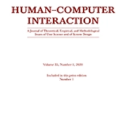Hundreds of millions of speakers of bidirectional (BiDi) languages rely on writing systems that mix the native right-to-left script with left-to-right strings. The global reach of interactive digital technologies requires special attention to these people, whose perception of interfaces is affected by this script mixture. However, empirical research on this topic is scarce. Although leading software vendors provide guidelines for BiDi design, bidirectional interfaces demonstrate inconsistent and incorrect directionality of UI elements, which may cause user confusion and errors. Through a websites' review, we identified problematic UI items and considered reasons for their existence. In an online survey with 234 BiDi speakers, we observed that in many cases, users' direction preferences were inconsistent with the guidelines. The findings provide potential insights for design rules and empirical evidence for the problem's complexity, suggesting the need for further empirical research and greater attention by the HCI community to the BiDi design problem.
翻译:数亿双向语言(Bidi)语言的讲者依赖将本地右向左脚文字与左对右字串混在一起的书写系统。交互式数字技术的遍及全球范围要求特别关注这些人,因为他们对界面的看法受到这种脚本混合物的影响。然而,关于这一专题的经验性研究很少。虽然主要的软件供应商为双向设计提供了指南,但双向界面显示UID元素的方向不一致和不正确,可能导致用户混淆和错误。我们通过网站的审查,发现了有问题的UI项目,并审议了其存在的原因。我们在对234 Bidi发言者进行的网上调查中发现,在许多情况下,用户的方向偏好与准则不一致。研究结果为设计规则提供了潜在的深刻见解,为问题的复杂性提供了经验性证据,表明HCI社区需要进一步进行经验性研究,并更加关注Bidi的设计问题。




